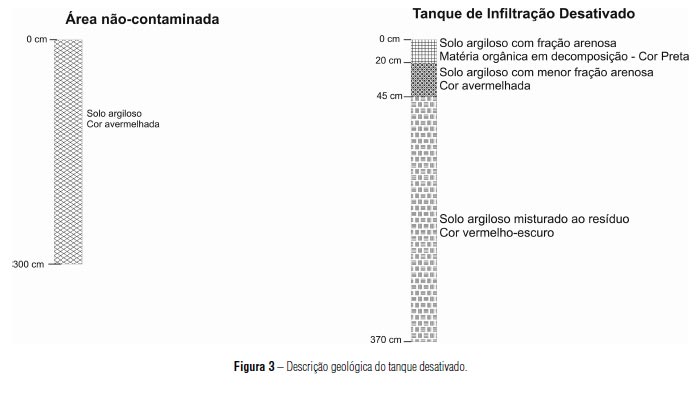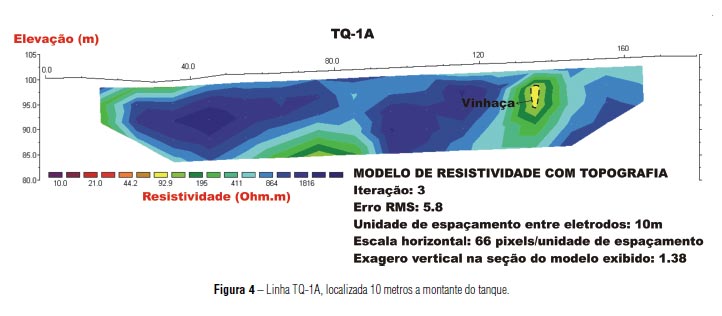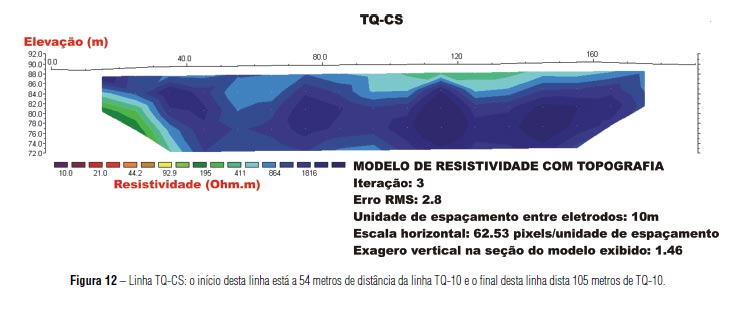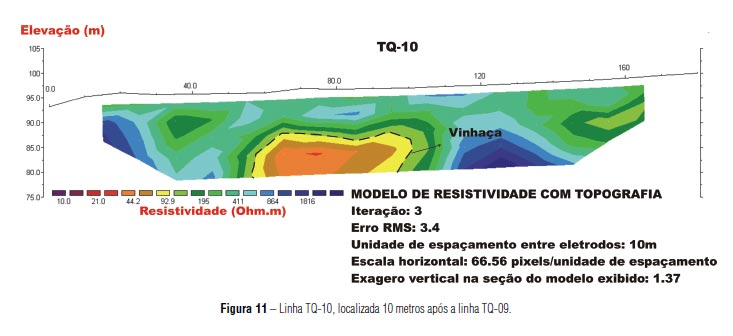The vinasse, awaste produced in the proportion of 13 liters for each liter of alcohol. It has a high potential of polluting groundwater and superficial water resources, changes the soil behaviour and can also develop sanilization problems. This work aims to evaluate the efficiency of the DC-resistivity method in detecting and mapping anomalies caused by inappropriate disposal of vinasse in an inactive infiltration tank located at Sepé-Tiarajú settlement of landless agricultural laborers in the Ribeirão Preto region. Besides, as secondary goals, this work aims to characterize the type of anomaly residue as well as to diagnose its influence inside and outside of the limits of the tank. Eleven electrical resistivity tomography profiles were carried out with the dipole-dipole array, 10m of dipoles length and 5 leveis of investigation The geophysical survey enabled us to conclude that the DC-resistivity method is appropriate for mapping the contamination plume caused by intense vinasse disposal and its influence. It enabled also to conclude that the contamination exceeds the tank limits. The vinasse influence can be characterized by low resistivity values between 10 Ohm.m and 90 Ohm.m and its behavior can be compared with the one of the chorume, which is also conductive.
vinasse; DC-resistivity; soil contamination














